Performance Study of Precipitated Barium Sulfate M-700 in Waterborne Anti-corrosive Paints
 Aug 12, 2024|
Aug 12, 2024| View:230
View:230By Lu Yunzhu, Fang Chang, Fang Life, Yunfu Hongzhi New Materials Co., Ltd.
Abstract: Under the same conditions without adding anti-corrosion additives and pigments, the performance of precipitated barium sulfate M-700 by our company was compared with that of ordinary precipitated barium sulfate in the waterborne epoxy coating system. The experimental results show that the precipitated barium sulfate M-700 can not only act as a filler, but also improve the salt spray resistance, aging resistance, water resistance, flash rust resistance and other related properties of waterborne epoxy coatings, so that the comprehensive properties can be effectively improved and the performance requirements of anti-corrosion coatings can be further met.
Keywords: Precipitated barium sulfate;Salt spray resistance;Aging resistance; Water resistance;Flashing rust resistance
Introduction
Barium sulfate, due to its strong chemical inertness, good stability, strong acid and alkali resistance, moderate hardness, and the ability to absorb harmful radiation, has been widely used. Our company's modified precipitated barium sulfate has high purity, good whiteness, and low electrical conductivity. It can not only be used as a filler but also serves as a functional eco-friendly material that can improve specific performance requirements. Therefore, it has been deeply applied in various high-performance industrial paint fields, especially in the anti-corrosive coatings with large demand, where it has been recognized by many users.
In waterborne epoxy anti-corrosive coatings, the addition of precipitated barium sulfate is a good choice. It can not only increase the solid content, reduce the VOC content in the paint, enhance the environmental effect, but also improve the compactness of the paint film, reduce the shrinkage rate, and have good physical properties and strong anti-penetration ability. It can effectively isolate the metal from the corrosive medium, thereby improving the comprehensive performance of the waterborne epoxy anti-corrosive coatings to a certain extent, and thus has been widely used in various types of anti-corrosive coatings.
1 Experimental Section
1.1 Main Raw Materials
Precipitated Barium Sulfate: M-700, particle size 0.7µm, Yunfu Hongzhi New Materials Co., Ltd.;
Ordinary Precipitated Barium Sulfate: particle size 0.7µm, commercial product;
Waterborne Epoxy Modified Dispersion: commercial product;
Leveling Agent: TeGo-346, Germany DiGao;
Defoamer: TeGo-904w, Germany DiGao;
Dispersant: Silok-7170w, Sloke;
Rheology Aid: W-692, Jia Ming Chemistry;
Solvent: Commercial industrial product;
Thickener: Commercial industrial product;
Distilled Water: Self-made.
1.2 Product Property Table and Electron Microscopy Images
Table 1 Property Comparison Table
Project Category | Median Particle Diameter (µm) | Whiteness (%) | Oil Absorption (g/100g) | 105°C Volatiles (%) | Surface Treatment |
Precipitated Barium Sulfate M-700 | 0.7 | ≥98 | 13 | ≤0.3 | Organically Modified |
Ordinary Precipitated Barium Sulfate | 0.7 | 93 | 15 | ≤0.8 | None |
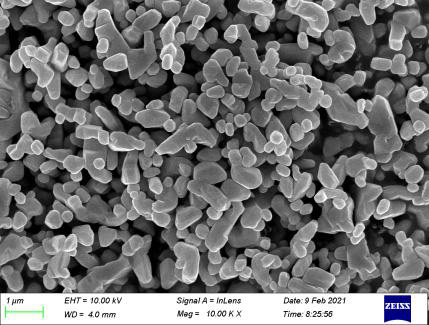 | 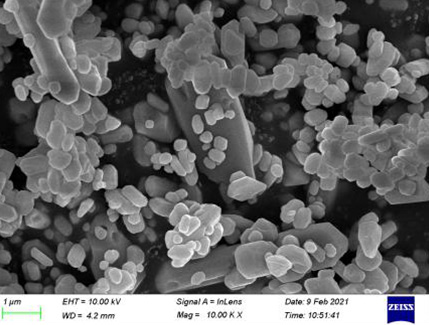 |
Figure 1 Precipitated Barium Sulfate M-700 | Figure 2 Ordinary Precipitated Barium Sulfate |
Table 1 is the property comparison table of precipitated barium sulfate M-700 and ordinary precipitated barium sulfate studied in this report. In addition, the differences between precipitated barium sulfate M-700 and ordinary precipitated barium sulfate can be seen in the electron microscopy images from Figures 1 and 2.
1.3 Main Equipment
High-speed Disperser: SFU400, Shanghai Micro-Motor;
Electronic Scale: JM-B-3003, 0.01g, Chao Ze Weighing Equipment Co., Ltd.;
Fineness Tester: QXD-50, Tianjin Jingke Material Co., Ltd.;
Coater: SZQ (100-150-200-250µm), Guangzhou Deman Yi Instrument;
Tri-angle Gloss Meter: CS380, Shanghai Liangyan Intelligent Technology Co., Ltd.;
Xenon Light Aging Test Chamber: SD-Z-150A, Dongguan Hui Tai Machinery Co., Ltd.;
Color Difference Meter: CM-2300d, Minolta;
Ceramic Nano Horizontal Sand Mill: CSN-1, Chiler (Shanghai) Mechanical Technology Co., Ltd.;
Salt Fog Resistance Tester: ZL-90, Zhenglan Precision Instruments;
Film Impact Tester: QJC-100CM, Dongguan Hua Guo Precision Instruments;
Film Cylinder Bending Tester: QTY-32, Shanghai Pushen;
Pencil Hardness Tester: QHQ-A.
2 Experimental Method of Precipitated Barium Sulfate M-700 in Waterborne Anti-corrosive Paint
2.1 Preparation of Waterborne One-component Epoxy Anti-corrosive Paint
Table 2 Basic Formula of Waterborne Epoxy Anti-corrosive Paint (One-component)
Project Category | Formula 1 | Formula 2 |
Distilled Water | 15 | 15 |
TeGo904w Defoamer | 0.3 | 0.3 |
Silok7170w Dispersant | 0.5 | 0.5 |
Precipitated Barium Sulfate M-700 | 40 | / |
Ordinary Precipitated Barium Sulfate | / | 40 |
Waterborne Self-crosslinking Epoxy Modified Acrylic Dispersion | 40 | 40 |
TeGo346 Leveling Agent | 0.2 | 0.2 |
W-692 Rheology Aid | 0.3 | 0.3 |
TeGo904w Defoamer | 0.2 | 0.2 |
Solvent | 3 | 3 |
Thickener | 0.5 | 0.5 |
Total | 100 | 100 |
Table 2 is the basic formula. The deionized water, dispersant, defoamer, and precipitated barium sulfate in the formula are added to the dispersion tank in order, and high-speed dispersion is carried out for 10-15 minutes to mix evenly, and then ground until the fineness is less than 30μm to obtain the paste. The epoxy emulsion, solvent, and leveling agent are added to the paste and dispersed at low speed until uniform, then an appropriate amount of thickener is added to adjust the viscosity to obtain the one-component paint.
2.2 Preparation of Experimental Comparative Samples
Before the experiment, the dust and impurities on the surface of the iron plate should be rinsed and dried. Then, the tin-plated anti-rust coating on the surface of the iron plate is ground off with 400-600 mesh sandpaper, and the metal debris on the surface of the iron plate is wiped clean with alcohol and dried for use. The above paint formula is prepared according to GB/T 1727-1992 (General Film Preparation Method) for the test.
3 Results and Discussion
3.1 Comparison of Coating Physical Properties
Table 3 Comparison of Coating Physical Property Data
Project Category | Formula 1 | Formula 2 (Ordinary Precipitated Barium Sulfate) | Reference Test Standard |
Glossiness (20°) | 10.2 | 6.8 | GB/1743-1979《Method for Determination of Paint Film Gloss》 |
Glossiness (60°) | 59.7 | 39.1 | |
Glossiness (85°) | 94.3 | 88.2 | |
a value | 0.005 | 0.144 | |
b value | -0.235 | 0.068 | |
L value | 61.554 | 61.883 | |
Whiteness value | 30.16 | 28.489 | |
Dispersibility | 22μm | 32μm | GB/T 1724-2019 《Determination of Grinding Fineness of Paints, Varnishes and Printing Ink》 |
Wetting and leveling | Excellent | Good | GBT1950-1979《Test method for leveling property of coatings》 |
Hardness/(pencil hardness) | HB | HB | GB/6739一2006《Paints and varnishes-Determination of hardness of paint film by pencil method》 |
Adhesion/Baige method/Grade | 0 | 0 | GB/T9286一1988《Paints and varnishes-scratch test of paint films》 |
Impact resistance/cm | 50 | 40 | Tested according to GB/T1732-1993 《Determination of Impact Resistance of Paint Films》 |
Flexibility/mm | 2 | 3 | Tested according to GB/T6742-2007 《Bending Test (Cylindrical Mandrel) for Paints and Varnishes》 |
The experimental results are shown in Table 3. It can be observed from the results that the glossiness of the coating film with the addition of our company's precipitated barium sulfate M-700 is significantly higher than that with the addition of ordinary precipitated barium sulfate. Moreover, the impact resistance and flexibility are both one grade higher. In terms of dispersibility and wetting leveling, our company's precipitated barium sulfate M-700 is not only easy to disperse but also has certain wetting and grinding assistance effects, which can effectively improve the leveling of the coating film.
3.2 Salt Fog Resistance Test
The anti-corrosive performance of the coating film is evaluated by using the Neutral Salt Spray Test (NSS). The prepared coating samples are placed in the salt fog chamber for 24 hours, which is equivalent to one year of exposure in the natural environment. The test conditions are a 5% sodium chloride solution, and the test temperature inside the salt fog chamber is 30-45°C. The changes of the coating samples in the salt fog environment for 120 hours are recorded.

Figure 3: Salt Fog Resistance Comparison Chart
Table 4: Comparison of Coating Salt Fog Resistance Performance
Project Category | Formula 1 | Formula 2 (Ordinary Precipitated Barium Sulfate) | Reference test standard |
Salt Fog Resistance | 120h coating film no blistering, slight rust spots, slight whitening, rusting at the line<2mm | 72h coating film blistering, whitening, severe rusting, partial shedding, rusting at the line >2mm | GB/T1771-2007 《Determination of Neutral Salt Fog Resistance of Paint and Varnish》 |
In waterborne anti-corrosive coatings, salt fog resistance is one of the very important indicators to evaluate the performance of the coating film. The test can be flexibly carried out for different durations of salt fog resistance according to the performance requirements of the anti-corrosive coating.
From Figure 3 and Table 4, it can be seen that compared with ordinary precipitated barium sulfate, the coating film added with our company's precipitated barium sulfate M-700 maintains well, with almost no rust appearing. In addition, slight blistering is observed at the line of the sample, and the rust expansion width is less than 2mm. However, the board surface added with ordinary precipitated barium sulfate is severely rusted, accompanied by shedding and discoloration phenomena, with severe rusting, blistering, and rust expansion width greater than 2mm at the line, showing poor overall salt fog resistance. The addition of our company's precipitated barium sulfate M-700 can effectively improve the compactness of the coating film and reduce its permeability, thereby extending the protection time of the coating film on the coated parts.
3.3 Aging Resistance Test
The aging resistance performance of the coating film is tested using a xenon lamp aging test chamber. The temperature parameter is 40°C, and the exposure cycle uses a black standard temperature of 50±3°C for 8 hours of irradiation exposure, and 4 hours of non-irradiation condensation at a black standard temperature of 50±3°C. The glossiness change of the coating film is recorded after each cycle. The aging resistance performance is judged by the change in glossiness, and the test is terminated when the main performance indicators of the sample drop to 50% of the initial value.
Table 5 Glossiness Before Aging Resistance Test
Project Category | Formula 1 (Precipitated Barium Sulfate M-700) | Formula 2 (Ordinary Precipitated Barium Sulfate) |
Glossiness (20°) | 10.2 | 6.8 |
Glossiness (60°) | 59.7 | 39.1 |
Glossiness (85°) | 94.3 | 88.2 |
Table 6 Glossiness After Aging Resistance Test
Project Category | Formula 1 (Precipitated Barium Sulfate M-700) | Formula 2 (Ordinary Precipitated Barium Sulfate) |
Glossiness (20°) | 7.3 | 1.7 |
Glossiness (60°) | 45.4 | 7.8 |
Glossiness (85°) | 70.6 | 33.9 |
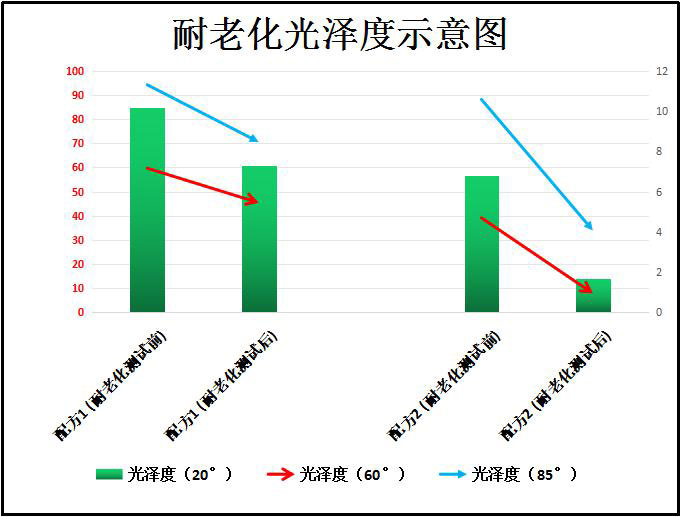
Figure 4 Comparison Chart of Aging Resistance Glossiness
Table 7 Comparison Results of Coating Aging Performance
Project Category | Formula 1 (Precipitated Barium Sulfate M-700) | Formula 2 (Ordinary Precipitated Barium Sulfate) | Reference Test Standard |
Aging Resistance | Coating film no chalking, no blistering, no whitening, no yellowing, slight gloss reduction | Coating film no chalking, local blistering, coating film yellowing, severe gloss loss | GB/T1865-2009 《Artificial Climate Aging and Artificial Radiation Exposure of Paint and Varnish Exposed to Xenon Arc Radiation》 |
From Figure 4 and Table 7, it can be seen that the coating film with the addition of precipitated barium sulfate M-700, apart from a slight reduction in glossiness, did not exhibit whitening or yellowing of the coating film, and has certain light and color retention properties. In contrast, the situation with the addition of ordinary precipitated barium sulfate shows that the coating film yellows, blisters locally, and loses gloss severely, with a sharp decline in performance. This shows how much difference different precipitated barium sulfates can make to the aging resistance of anti-corrosive coatings.
3.4 Water Resistance
The water resistance of the coating film is evaluated by the immersion test method. In the normal temperature environment, the prepared coating samples are soaked in water, and the changes of the coating samples after being soaked in water for 120 hours are recorded to assess the water resistance of the coating samples with different precipitated barium sulfates.
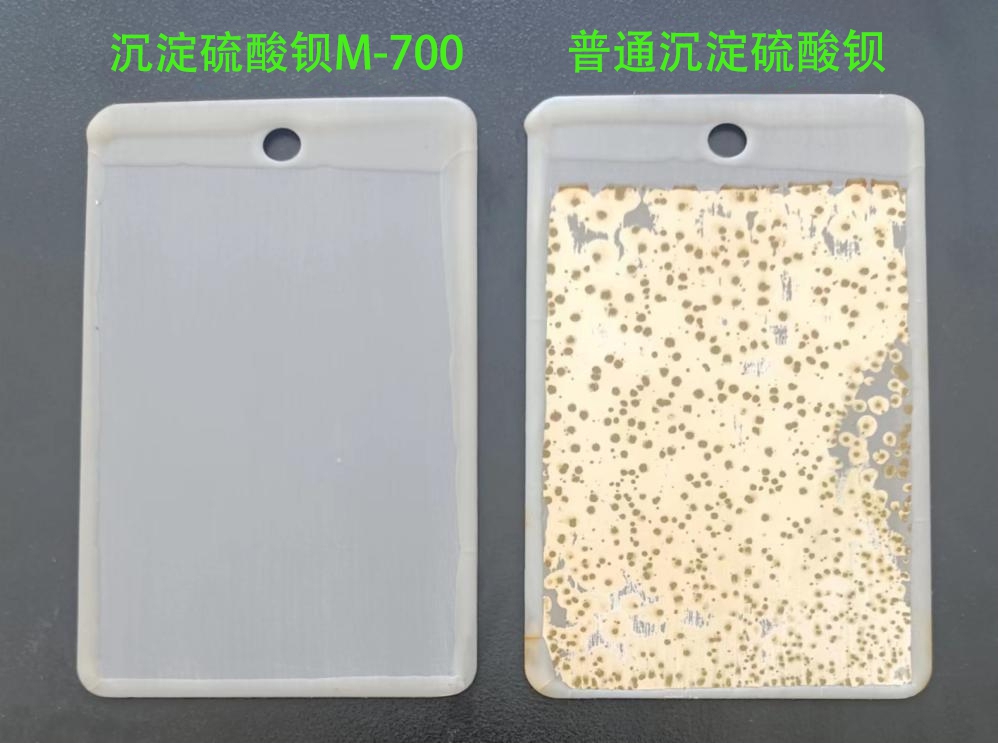
Figure 5 Water Resistance Comparison Chart
Table 8 Comparison Results of Coating Water Resistance Performance
Project Category | Precipitated Barium Sulfate M-700 | Ordinary Precipitated Barium Sulfate | Reference Test Standard |
Water Resistance | 120h coating film no blistering, no rusting, slight whitening, recoverable after drying | 72h coating film blistering, rusting, whitening and discoloration, not recoverable after drying | GB/T1733-1993 《Determination of Film Water Resistance》 |
From Figure 5 and Table 8, it can be seen that the surface effect of the coating film added with ordinary precipitated barium sulfate is poor, with problems such as rusting, blistering, and whitening and discoloration, poor durability, which seriously affects the use of the coating product. However, the coating film added with our company's precipitated barium sulfate M-700, although there was a slight whitening phenomenon in the early stage, it can recover quickly after natural drying, and the coating film is basically normal.
3.5 Flash Rust Prevention Test
The coating is applied to the polished tinplate, and before the coating film dries, the sample is placed in a sealed environment with a relative humidity >95% and a temperature of 25-30°C for 24 hours to visually inspect the degree of rusting. The flash rust prevention is divided into 5 levels according to the number of rust spots per unit area: Level 0 is the best, no defects; rust spots ≤2 for Level 1; 2 < rust spots ≤5 for Level 2; 5 < rust spots ≤10 for Level 3; 10 < rust spots ≤20 for Level 4; rust spots >20 for Level 5, the worst.
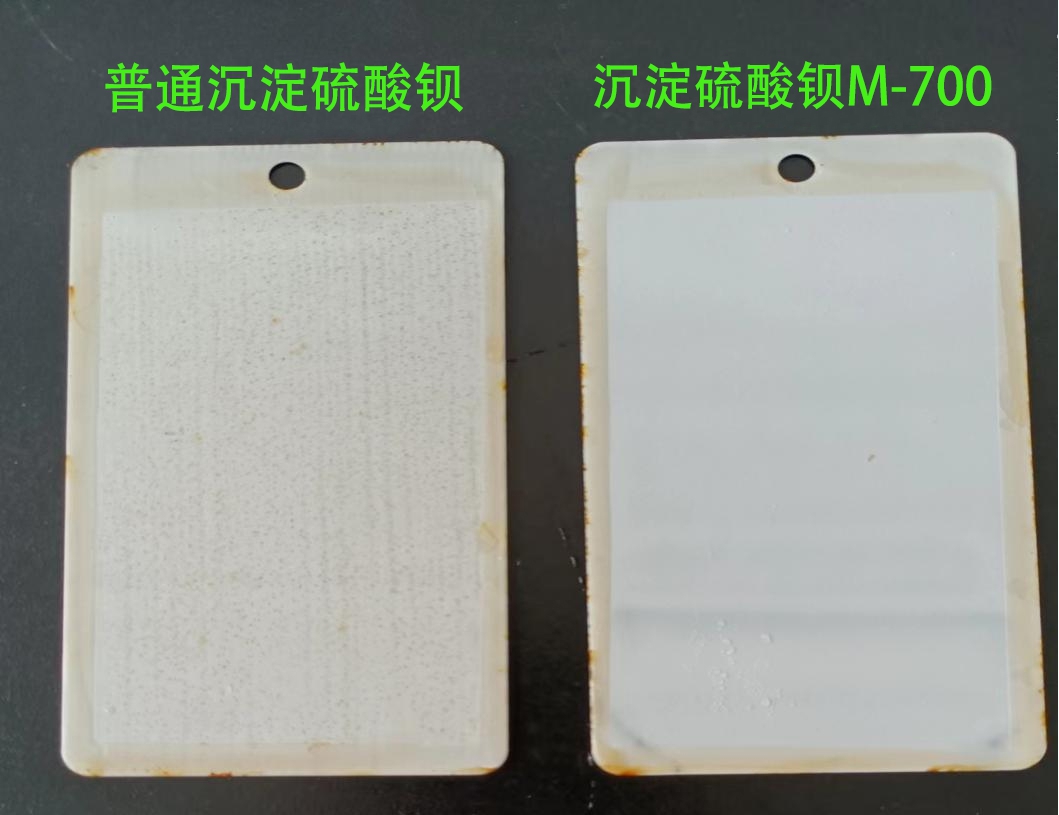
Figure 6 Flash Rust Prevention Comparison Chart

Figure 7 Schematic Diagram of Flash Rust Occurrence
Table 9 Comparison Results of Coating Flash Rust Prevention Performance
Project Category | Formula 1 (Precipitated Barium Sulfate M-700) | Formula 2 (Ordinary Precipitated Barium Sulfate) |
| Flash Rust Prevention | Coating film no obvious rust spots | Coating film with large area rust spots, a few bubbles |
Flash rusting is a common phenomenon in water-based metal coatings, referring to the small area of rusting that occurs between the metal substrate surface and the coating before the coating dries after being coated with a water-based coating under the coexistence of water and oxygen. It has a greater impact on the protective performance of the coating film in the later period.
Combined with Figure 6 and Table 9, it is found that under the same conditions without adding a flash rust inhibitor, the coating film using precipitated barium sulfate M-700 has no rust spots, showing excellent flash rust prevention performance. However, the coating film added with ordinary precipitated barium sulfate has dense rust spots, poor inhibition ability for flash rusting, and seriously affects the performance of water-based anti-corrosive coatings.
4 Conclusion
In summary, this report focuses on two different types of precipitated barium sulfate as the main fillers, each added to waterborne anti-corrosive coatings. Without the addition of other anti-corrosion additives and rust inhibitors, a comparison of the performance of the anti-corrosive coatings clearly demonstrates the significant difference between our company's precipitated barium sulfate M-700 and ordinary precipitated barium sulfate. When used as a regular filler, precipitated barium sulfate M-700 can fulfill a filling role and effectively reduce costs. When utilized as a functional filler, it can improve the leveling of the coating film, enhance the film's density, increase glossiness, and strengthen the film's resistance to permeation. Moreover, our company's precipitated barium sulfate M-700 boasts high purity and low electrical conductivity, leading to effective enhancements in comprehensive performance such as salt fog resistance, water resistance, and flash rust prevention, playing a role in corrosion inhibition and rust prevention in anti-corrosive coatings. The data presented in this experimental report are based on measurements taken in our company's laboratory; however, the specific actual effects should be determined based on the experiments and formulation systems conducted by the customers.





 Language
Language



